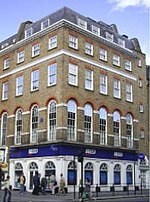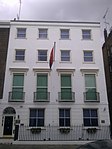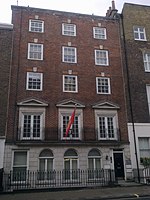Baker Street
Pages containing links to subscription-only contentStreets in the City of WestminsterTourist attractions in the City of WestminsterUse British English from November 2010

Baker Street is a street in the Marylebone district of the City of Westminster in London. It is named after builder William Baker, who laid out the street in the 18th century. The street is most famous for its connection to the fictional detective Sherlock Holmes, who lived at a fictional 221B Baker Street address on the north of the street. The area was originally high class residential, but now is mainly occupied by commercial premises.
Excerpt from the Wikipedia article Baker Street (License: CC BY-SA 3.0, Authors, Images).Baker Street
Baker Street, London Marylebone
Geographical coordinates (GPS) Address Website Nearby Places Show on map
Geographical coordinates (GPS)
| Latitude | Longitude |
|---|---|
| N 51.52 ° | E -0.1566 ° |
Address
Spaces
Baker Street 83
W1U 6AT London, Marylebone
England, United Kingdom
Open on Google Maps










